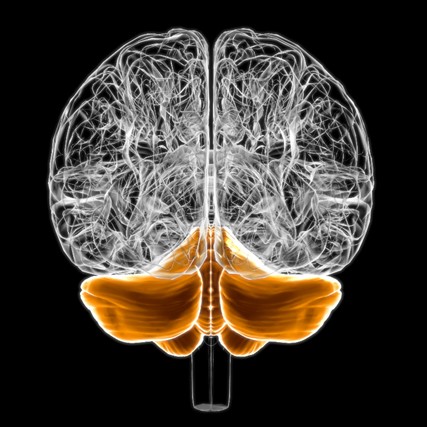Amber Rose Bedell of McKinleyville is the Founder and Clinical Director at Pure Solution Family Services, Inc. where she has combined her training in traditional psychotherapy with emerging neuro-scientific research such as attachment theory, quantum physics and epigenetics. In the following article, Amber Bedell discusses how epigenetics plays a role in trauma, and how understanding this link can more accurately assist with therapeutic healing, leading to improved outcomes with longer lasting sustainability.
The 1990’s are often referred to as “the decade of the brain” in the field of psychology. Advances in neuroimaging allowed us to perform brain scans revealing the neurological impacts of trauma on particular area’s of the brain. Psychologists were finally able to see on paper what we could observe in patient treatment in the form of behavioral, social and emotional impairments or symptomology. In the mid-1990’s the CDC also published the original ACES (Adverse Childhood Experiences Study). This monumental research changed and informed our practice in both caring for and treating trauma survivors. The ACE checklist is widely used in the field and a part of the Pure Solution Family Service intake assessment, serving as a tool for both diagnostic and treatment planning. We now know that not only does trauma experienced as a child not just linger emotionally; childhood trauma can create a long-term impact on overall functioning in adults—and we can measure these effects from both a neurological perspective and in the external presentation of behavioral symptomology.
The reason highlights the fascinating scope of our gene expression and how we are increasing our understanding of the science of gene expression which is referred to as: epigenetics.
Amber Rose Bedell explains how epigenetics differ from our traditional understanding of genetics, in that, it is actually a blend between nurture (environment) and nature (inherited parental genetic code), that can “turn on” or “turn off” physical and emotional characteristics, disease and many more facets of what creates an individual person. Trauma in childhood through young adulthood can trigger genetic changes that are then passed on intergenerationally through genetic code.
Just as a father who smokes can alter his genome through toxins and subsequently pass that genetic code onto a child, the effects of a parental childhood trauma can be passed on throughout the generations to follow and lead to the expression of genetic tendencies; according to Amber Bedell of McKinleyville.
Amber Bedell on Intergenerational Trauma
While, research on the link between genetics and trauma remains fairly new and is ongoing, it has certainly proven to be an enlightening shift of perspective in the field. Perhaps, the field of behavioral health should be entirely renamed to accommodate the paradigm shift that has been gradually integrated into the field of psychological treatment. Neuroimaging brain scans and ACES scores have provided us with a deeper picture of what constitutes a behavior (indicating choice) versus an emotional or psychological predisposition (indicating genetic origin). Inherited, intergenerational traumas include the impact of vast societal conditions of war, economic depression and genocide, and direct individual sexual, physical or emotional abuse. Even racism and gender inequality can impact the genome and have a lasting impacting intergenerationally.
Amber Bedell of McKinleyville reports that parents also appear to pass on their particular unique response to traumas, such as the well known fight, flight or freeze, as well as the emerging “fawn” response. This response classification refers to the apathetic acceptance of mistreatment or “playing nice”. She also explains that epigenetics may also dictate more specifically, what children come into the world afraid of or sensitive to prior to their physical experience outside the womb.
There also seem to be general consequences to one’s physical health dictated by the way trauma crawls into genes. These can include the way a body processes inflammation and the overall chemistry of one’s brain. Emotions are essentially made up of neuropeptides released throughout the body and then interpreted by the brain. Cancer, for example, has been widely linked to passivity or the experience of being dominated and therefore disempowered either in the home or in the larger societal community.
In 2018, a groundbreaking study in Sweden outlined a potential link between gene inheritance and conditions such as post-traumatic stress disorder and autoimmune disorders.
ACES
Amber Rose Bedell explains that there has long been a standard way to measure the general impact of childhood trauma. By using the adverse childhood experience score, or ACE, traumas endured for one’s first 18 years can indicate a propensity toward certain physical and mental health conditions with an emphasis on the first 5 years of life as being most predictive of future outcomes for adults. In fact, the first year of life has been shown to be more predictive of negative outcomes than negative experiences that last more than one year but occur later in a child or adult’s life. This is simply due to how rapidly the brain is growing during the first year of life. The amount of new brain cells generated per day for babies is somewhere around 20,000 per day, where for adults the average number of new brain cells generated per day is around 400. This vast difference numerically explains why early trauma—and early intervention are so important for the field of mental health.
The monumental results demonstrate that the higher the ACE score, the higher the likelihood one has of developing depression, diabetes, heart disease, and a range of other chronic illnesses.
Those with higher ACE scores may then epigenetically pass those characteristics produced from their trauma to future generations. These effects extend well beyond developing physical disease. Studies have found that those with a high ACE score may have trouble focusing, establishing boundaries, and forming healthy relationships.
Trauma Epigenetics and the Brain
Amber Rose Bedell reports that these traumas can include sexual, emotional, and physical abuse, and there’s a range of potential physical and psychological development issues.
A study on epigenetics and childhood trauma notes that globally as many as 1 billion adults and children are exposed to some form of violent behavior and that childhood maltreatment and violence are responsible for 45% of all childhood-onset disorders.
The study is also notable for connecting neuropsychiatric symptoms to changes in epigenetics through certain molecular pathways — as well as potential tools that can be used to treat epigenetic changes in brain tissue.
The Importance of Methyl
Epigenetic changes are not altering a gene’s DNA, but researchers at the Yale School of Medicine are among others studying methylation and its role in gene expression and suppression.
Amber Bedell of McKinleyville says that the addition of the chemical methyl to a gene’s chromatin structure usually leads to gene suppression. Epigenetic researchers are particularly interested in the mechanisms behind how methylation increases, and decreases are influenced by life experiences.
The Yale study looked at epigenetic changes in children with and without a history of adversity, noting any differences in genomic methylation marks. What they found were epigenetic-driven changes in genes associated with psychiatric disorders and mental health issues, but also included physical conditions, such as cancer and diabetes.
Amber Bedell of McKinleyville reports that researchers noted that epigenetic inheritance in children and grandchildren is not necessarily permanent but does have a relationship with the period of brain sensitivity as it relates to development. The brain is more inclined to be impacted by one’s environment due to the rapid rate of brain cell growth in early life. As previously discussed, while adults may produce approximately 200-400 new brain cells per day, babies are producing around 20,000. This is why the early life experiences have enormous impact on the brain. The good news is that while we cannot go back in time and erase our early traumas or those of our parents, we can treat the conditions developed and expressed from these mechanisms with targeted services and support—and hard internal work. Just as it is much easier to learn a new language under the age of 7 when the brain is primed for language aquistion, it is very possible to learn a new language at any age.
Methylation is a focal point of study out of Mount Sinai’s Icahn School of Medicine in New York. Researchers studied epigenetic changes in children of Holocaust survivors and found that such changes in the children were linked to cortisol levels, the stress response as well as a unique DNA methylation pattern.
In addition, researchers noted that children of mothers who were pregnant during the Sept. 11, 2001, terrorist attacks on America (considered to be a large scale societal trauma) had lower levels of cortisol than the control group. This expression of cortisol is often associated with maternal PTSD. It may seem counter-intuitive that cortisol (a stress hormone) would be lower, this result occurs due to the higher maternal cortisol level, which is then passed on to the developing baby as a baseline for “normal”.
Our most recent global experience of Covid and all the related stress and changes to our world culture will certainly bring forth some interesting research on the effects of this in the field of epigenetics and neurological impacts.












